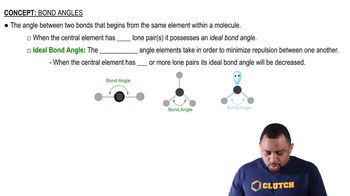(c) What atomic orbitals are involved in the stacking of graphite sheets with each other?
Although polyethylene can twist and turn in random ways, the most stable form is a linear one with the carbon backbone oriented as shown in the following figure:

The solid wedges in the figure indicate bonds from carbon that come out of the plane of the page; the dashed wedges indicate bonds that lie behind the plane of the page. (a) What is the hybridization of orbitals at each carbon atom? What angles do you expect between the bonds?
 Verified step by step guidance
Verified step by step guidance
Verified video answer for a similar problem:
Key Concepts
Hybridization

Bond Angles

Molecular Geometry

Employing the bond enthalpy values listed in Table 8.4, estimate the molar enthalpy change occurring upon (a) polymerization of ethylene. (b) formation of nylon 6,6. (c) formation of polyethylene terephthalate (PET).
Employing the bond enthalpy values listed in Table 8.3 estimate the molar enthalpy change occurring upon c. formation of polyethylene terephthalate (PET).
(a) In polyvinyl chloride shown in Table 12.6, which bonds have the lowest average bond enthalpy?
(b) When subjected to high pressure and heated, polyvinyl chloride converts to diamond. During this transformation which bonds are most likely to break first?
(c) Employing the values of average bond enthalpy in Table 8.3, estimate the overall enthalpy change for converting PVC to diamond.
